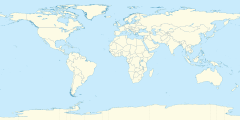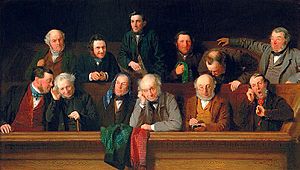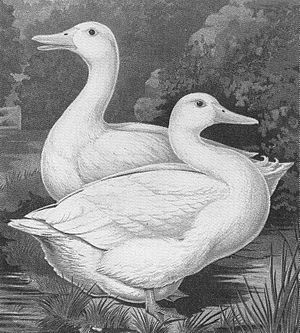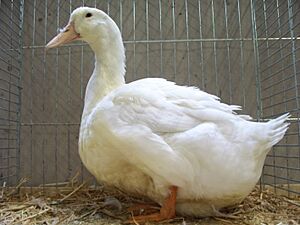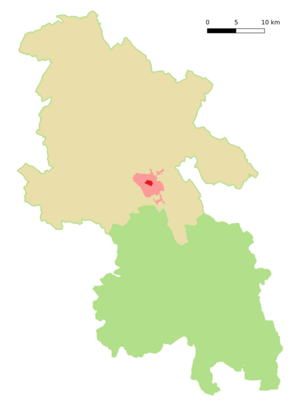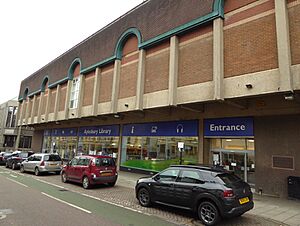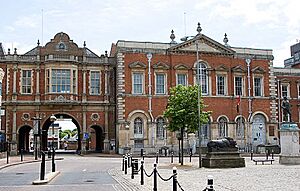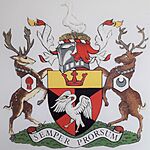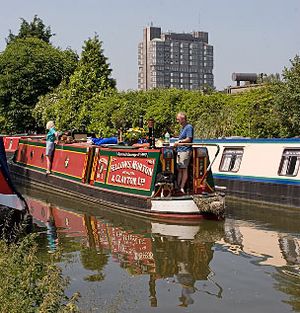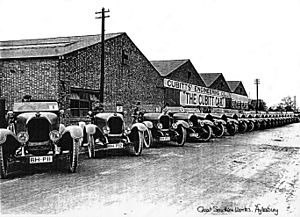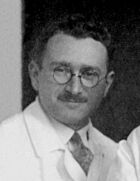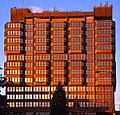Aylesbury facts for kids
Quick facts for kids Aylesbury |
|
|---|---|
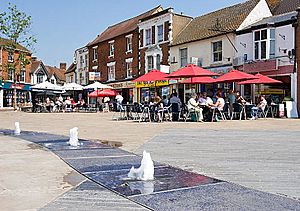 Kingsbury, Aylesbury |
|
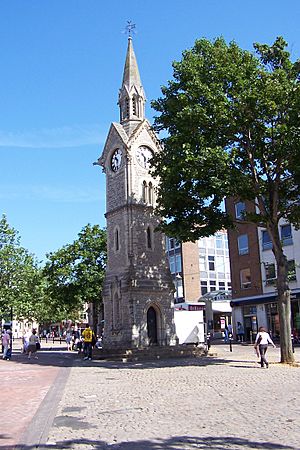 Aylesbury Clock Tower |
|
| Population | 63,273 (2021) Urban area 94,238 (Former) Aylesbury Vale district 174,137 |
| OS grid reference | SP818138 |
| • London | 36 miles (58 km) |
| Civil parish |
|
| Unitary authority |
|
| Shire county |
|
| Ceremonial county | |
| Region | |
| Country | England |
| Sovereign state | United Kingdom |
| Post town | AYLESBURY |
| Postcode district | HP18-HP21 |
| Dialling code | 01296 |
| EU Parliament | South East England |
| UK Parliament |
|
Aylesbury (/ˈeɪlzbəri/ aylz-BƏR-ee) is a town in England. It is the main town of Buckinghamshire in South East England. Aylesbury is famous for the Roald Dahl Children's Gallery and the Waterside Theatre. You can find it in the middle of Buckinghamshire, between High Wycombe and Milton Keynes.
In 2017, Aylesbury was named a "Garden Town." This means it's planned to grow, with about 16,000 new homes expected to be built by 2033.
Contents
- What Does Aylesbury Mean?
- Aylesbury's Past
- The Famous Aylesbury Duck
- People in Aylesbury
- Where is Aylesbury?
- Fun and Community
- How Aylesbury is Governed
- Schools in Aylesbury
- Jobs and Businesses
- Sports and Fun
- Getting Around Aylesbury
- Famous People from Aylesbury
- Twin Town
- Nearby Places
- Images for kids
- Freedom of the Town
- See also
What Does Aylesbury Mean?
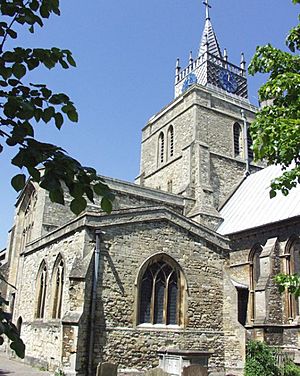
The name Aylesbury comes from Old English words. It was first written as Æglesburg in an old book called the Anglo-Saxon Chronicle. The word Ægles was a person's name, meaning "Ægel's." The word burg meant "fort" or "fortification." So, Aylesbury once meant "Fort of Ægel." We don't know who Ægel was, but the name tells us the town had a fort long ago.
Aylesbury's Past
When people dug in the town centre in 1985, they found an Iron Age hill fort. This fort was built around 400 BCE, which is a very long time ago!
Old stories say that Aylesbury was captured from the Britons by a person named Cuthwulf. This shows that Aylesbury was seen as an important place in the early Middle Ages. It became a big market town where people bought and sold goods. It was also the burial place of Saint Osgyth, and many pilgrims visited her shrine.
Aylesbury was a royal manor in 1086. This means it was owned by the king. Some lands in Aylesbury were given to people by William the Conqueror. They had to provide things like straw for the king's bed and food like geese and eels whenever he visited.
The town has a very old church called St. Mary the Virgin's. It was built in the Early English period, but many parts have been added later.
In 1450, a religious group called the Guild of St Mary was started in Aylesbury. It was also known as the Guild of Our Lady. This group became a meeting place for important local people. It was also a place where political plans were made, and it played a part in the Wars of the Roses. The building where they met is still there today on Church Street.
King Henry VIII made Aylesbury the new county town of Buckinghamshire in 1529. This happened because Aylesbury Manor belonged to Thomas Boleyn, who was the father of Anne Boleyn. Some people think the King made Aylesbury the county town to make the Boleyn family happy. A serious illness affected many people in the town in 1603 and 1604.
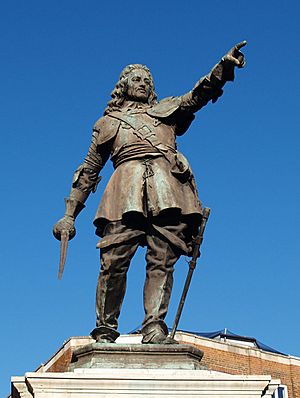
Aylesbury was very important during the English Civil War. It became a strong place for the Parliamentarian forces. In 1642, the Battle of Aylesbury was fought, and the Parliamentarians won. John Hampden, a local hero, lived nearby. His image was even used on the emblem of the local council, and his statue stands in the town centre.
In 1810, Louis XVIII, who was the King of France, lived in exile at Hartwell House near Aylesbury. A street in Aylesbury, Bourbon Street, is named after him.
Aylesbury's special symbol is the Aylesbury duck. These ducks have been raised here for a long time.
The town also gained international attention in 1963. This was when the people involved in the Great Train Robbery (1963) were put on trial in Aylesbury. The robbery happened close to the town.
A famous school in Aylesbury is Aylesbury Grammar School, which started in 1598. The original building is now part of the County Museum. Other important buildings include the King's Head Inn, a very old pub owned by the National Trust, and the Queens Park Centre.
James Henry Govier, a British painter, lived in Aylesbury. He created many artworks showing the town, including the church, canal, and the King's Head Inn. You can see his work in the Buckinghamshire County Museum.
Aylesbury is also the birthplace of the Paralympic Games. In 1948, during the Olympics in London, a doctor named Sir Ludwig Guttmann started a small sports event for World War II veterans. This event, held at Stoke Mandeville Hospital in Aylesbury, grew into the modern Paralympic Games. The Paralympics are now held right after every Summer Olympic Games. The mascot for the 2012 Paralympics was named 'Mandeville' after Stoke Mandeville Hospital.
The Rothschild Family bought many large estates near Aylesbury. These include Waddesdon Manor and Halton House. These grand homes have brought more visitors to the town and the surrounding areas.
The Famous Aylesbury Duck
In the 1700s, people in Aylesbury started breeding white ducks. These ducks became known as the English White. Since the late 1600s, ducks had been farmed in Aylesbury, making the town famous for them. Poor people raised these ducks and sent them to London every week. They soon became known as the Aylesbury duck.
The duck farming business in Aylesbury started to decline in the 1800s. Even when Beatrix Potter wrote The Tale of Jemima Puddle-Duck in 1908, which featured an Aylesbury duck, the breed was already struggling. Duck farmers in Buckinghamshire didn't use new technologies like incubators. Also, breeding ducks too closely together made them weaker. The cost of duck food went up a lot, and cheaper ducks from other places started to compete.
The First World War made things even harder for the remaining duck farmers. After the war, most small-scale duck farming in Aylesbury stopped. During the Second World War, there wasn't enough duck food, which caused more problems. By the 1950s, almost all duck farms in Aylesbury had closed. Today, only one family, the Wallers in Chesham, still raises pure Aylesbury meat ducks. However, many people keep them as a hobby.
The Aylesbury duck is still a symbol of the town. The local football team, Aylesbury United F.C., is nicknamed "The Ducks" and has an Aylesbury duck on their badge. The town's coat of arms also features an Aylesbury duck. There have even been pubs in the town named "The Duck."
People in Aylesbury
Aylesbury's population has grown a lot. In the 1960s, about 28,000 people lived here. By 2011, it was almost 72,000! This growth is mainly because many new homes were built, including estates for people moving from London. In the 1950s and 60s, some older parts of the town were taken down to build new shops and homes.
Between 2001 and 2011, Aylesbury's population grew by 2,000 people. This was due to new housing estates being built, especially on the north side of town.
In 2011, most people in Aylesbury were Christian (55.7%). About 26.9% said they had no religion, and 8.3% were Muslim.
Where is Aylesbury?
Town Areas
Modern Aylesbury has many different housing areas, or neighbourhoods. Some of these include:
- Bedgrove
- Berryfields
- Broughton
- Buckingham Park
- Coppice
- Crown Leys
- Elm Farm
- Elmhurst
- Fairford Leys
- Haydon Hill
- Hawkslade Farm
- Kingsbrook
- Mandeville Estate
- Mandeville Park
- Meadowcroft
- Prebendal Farm
- Quarrendon
- Queens Park
- Shakespeare Estate
- Southcourt
- Stoke Farm
- Stoke Grange
- Walton Court
- Watermead
- The Willows
Some parts of town have higher property prices. These include Bedgrove, the area around St. Mary's Church, and Queens Park, especially near the canal.
Nearby Villages and Farms
Aylesbury has grown so much that it now surrounds some smaller villages and former farms. These include:
- Bedgrove
- California
- Fairford Leys
- New Zealand
- Prebendal Farm
- Quarrendon
- Turnfurlong
- Walton
Future Growth
Aylesbury is expected to keep growing. Its population might reach over 100,000 people between 2018 and 2023.
Land and Soil
Aylesbury is located southeast of the River Thame. The town sits on two areas of Portland stone, which makes it a bit higher than the surrounding land. The lower areas have clay soils. The town centre is on a "gentle hill," as described in 1848.
Fun and Community
The town centre has many pubs and bars. The Queens Park Centre is also in the town centre. It's the UK's largest independent arts centre.
The local newspaper is the Bucks Herald, which first started publishing in 1832.
Aylesbury used to have a local radio station called Mix 96. It started in 1994 but stopped in 2020. Now, Greatest Hits Radio plays in its place. The BBC local radio station for the area is BBC Three Counties Radio.
One of the most noticeable buildings in Aylesbury is the "Blue Leanie" office block, where Lloyds Bank is located. When it was first built, people worried that the sun reflecting off its shiny surface might bother drivers. So, trees were planted along the road to help.
The Aylesbury Waterside Theatre is a large, modern theatre that opened in 2010. It has 1,200 seats. The area around the theatre has also been redeveloped. This project, called the 'Waterside project,' aims to add new shops and create new jobs. A Waitrose supermarket and a Travelodge Hotel opened nearby. Restaurants like Wagamama and Nando's also opened on 'The Exchange,' next to the Odeon cinema. This area now has luxury apartments, more restaurants, and a new public square. The square has metal statues that represent Aylesbury as the home of the Paralympics. A new campus for [Bucks New University] also opened next to the Waterside Theatre.
The Bourg Walk Bridge, also known as the Southcourt Bridge, opened in 2009. It connects the Southcourt area to Aylesbury town centre. This bridge is an important part of the Aylesbury Hub project and won an award for engineering in 2009.
How Aylesbury is Governed
Aylesbury has two levels of local government. The first is the Aylesbury Town Council, which is like a local parish council. It is based at Aylesbury Town Hall. The second is Buckinghamshire Council, which is a larger council for the whole county. Its main office is also in Aylesbury.
The Aylesbury Town Council has 25 councillors. They represent only the people living in Aylesbury town. Villages and new developments just outside Aylesbury have their own local councils. The town council also chooses a town mayor each year. The mayor's job is mostly to represent the town at events.
History of Local Government
Aylesbury was given the right to govern itself by Queen Mary I in 1554. This meant the town could elect two members of parliament. However, this right was not fully used at first. After the English Civil War, the town did try to govern itself, but this was stopped in 1664. For a long time, the town was governed by its local church group, like many rural areas.
In 1849, a local board was set up to manage the town. This board later became the Aylesbury Urban District Council in 1894. In 1917, it became the Aylesbury Borough Council.
In 1974, the Aylesbury Borough Council joined with other nearby areas to form Aylesbury Vale. For a while, Aylesbury town did not have its own local council. But in 2001, the civil parish of Aylesbury was started again, and its council was named Aylesbury Town Council.
In 2020, the Aylesbury Vale District Council merged with other councils to form one big council for the whole county, called Buckinghamshire Council. Now, Buckinghamshire Council handles most local government tasks across the county.
Schools in Aylesbury
Aylesbury has many schools. It has Aylesbury College, which offers further education. There are also three grammar schools, two community upper schools, an academy, a university technical college, and many primary schools.
The secondary schools are:
- Aylesbury Grammar School (for boys only)
- Aylesbury High School (for girls only)
- The Aylesbury Vale Academy
- Buckinghamshire University Technical College
- The Grange School
- Sir Henry Floyd Grammar School
- Mandeville School
There are also special schools for students with particular needs:
- The PACE Centre
- Pebble Brook School
- Stocklake Park Community School
Aylesbury Music Centre is a large music school. It has produced musicians who have played in national orchestras.
Jobs and Businesses
For a long time, Aylesbury has been a centre for business. It has had a market since Saxon times. This is because it was on a main trade route that connected London to the southwest of England. A gaol (prison) was built in the town in 1180.
Old Industries
By 1477, flour was being made in the town for nearby areas. This grew into a big industry. The last flour mill in Aylesbury closed in the 1990s. In the 1560s, making sewing needles became a large industry in a nearby village called Long Crendon.
In 1672, poor children in Buckinghamshire were taught to make lace to earn money. This "Bucks lace" became very popular. However, by Victorian times, machine-made lace became cheaper, and the lace-making industry ended.
In the 1700s, Euclid Neale opened a clockmaking workshop in Aylesbury. He was one of the best clockmakers in the country.
Canals and Cars
In 1814, a part of the Grand Union Canal was opened to Aylesbury. This brought major industries to the town for the first time.
From 1919 to 1925, the Cubit Engineering Works in Aylesbury made cars. They built about 3,000 cars. These cars were strong and popular in places like Australia and South Africa. The factory buildings are now gone, replaced by homes.
Later in the 1900s, two big employers in the town were the printers Hazell, Watson and Viney and the Nestlé dairy. These factories employed more than half of the town's population. These factories have also been taken down. A Tesco supermarket opened where the printing factory was in 1994.
Aylesbury Today
Today, Aylesbury is still an important business centre. The market still meets in the old Market Square four days a week. While old companies like Nestlé and Hazell, Watson and Viney have left, Aylesbury has new industrial and commercial centres. This means the town has one of the lowest unemployment rates in the country.
A large Arla Foods dairy opened near Aylesbury in 2013. It is a major employer in the area.
Sports and Fun
Aylesbury has two local semi-professional football teams: Aylesbury Vale Dynamos F.C. and Aylesbury United F.C.. There is also a strong cricket club that started in 1837. Since 2013, Aylesbury has hosted a free 5 km run called the Aylesbury Parkrun.
The town's rugby team is Aylesbury Rugby Football Club. They are nicknamed 'The Ducks'.
Aylesbury has also had recent success in gymnastics. The Aylesbury Gymnastics Academy has trained two Olympians who won bronze medals at the Tokyo 2020 Olympic Games for Great Britain.
Getting Around Aylesbury
Trains
Aylesbury has two train stations: Aylesbury railway station and Aylesbury Vale Parkway railway station. You can take a train from these stations to London Marylebone. Stoke Mandeville railway station is also in the town area.
Trains first came to Aylesbury early, in 1839. Over time, Aylesbury had train links to four different London stations. However, many of these lines closed down. Now, the main train services go south to London.
A new train station, Aylesbury Vale Parkway, opened in 2008. It is on the northwest edge of town and has park and ride facilities. There are plans to extend train services further northwest to places like Winslow railway station, Milton Keynes Central, Bedford, and Oxford by 2030.
Roads
Aylesbury is on the A41 road, which goes from London to Birkenhead. This road connects to the M40 motorway about 13 miles west of Aylesbury. The A413 and A418 roads also pass through the town. The M25 motorway is about 21 miles away.
Buses
Aylesbury has a bus station. In 2006, work began to improve public transport in the town. This included new bus lanes and better connections between bus and train services. The Bourg Walk Bridge, which opened in 2009, was part of these improvements.
The town uses Buckinghamshire's "Rainbow Routes" for bus services. These colour-coded routes were set up by Buckinghamshire County Council to make bus travel easier.
Cycling Town
In 2005, Aylesbury received £1 million in funding to become one of six "Cycling Demonstration Towns" in England. This money helps the council encourage people to cycle more. They provide things like bike lockers, bike stands, and special road crossings for cyclists.
The Cycle Aylesbury team has created "Gemstone Cycleways." These are a network of routes that go from Aylesbury town centre to different places around the town, like Stone and Wendover.
Famous People from Aylesbury
- See Category:People from Aylesbury
Many notable people have lived in or been born in Aylesbury. This is partly because the main maternity hospital for the area was in Aylesbury for a long time. Here are some famous people connected to Aylesbury:
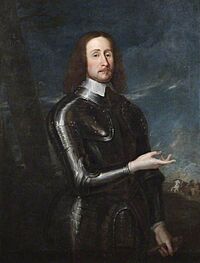

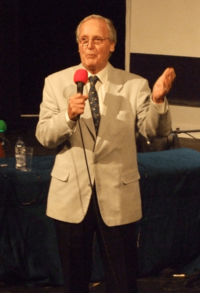
- Michael Apted (1941–2021), a film director and producer.
- Lynda Bellingham (1948–2014), an actress and author.
- Nick Blood (born 1982), an actor.
- Rutland Boughton (1878–1960), an English composer, born in Aylesbury.
- Brendan Cole (born 1976), a New Zealand ballroom dancer.
- Barns Courtney (born 1990), a singer and songwriter, born in Aylesbury.
- Catherine Anne Davies (born ca.1990), a musician and songwriter who grew up in Aylesbury.
- Liam Gillick (born 1964), an artist, born in Aylesbury.
- John Hampden (ca.1595–1643), an important politician during the English Civil War, lived near Aylesbury.
- John Junkin (1930–2006), a TV performer and scriptwriter.
- Andrea Leadsom (born 1963), a politician.
- John Otway (born 1952), a singer-songwriter.
- Nicholas Parsons (1923-2020), a TV presenter and actor.
- Sir James Clark Ross (1800–1862), an Arctic explorer.
- Vernon Scannell (1922–2007), a poet and author.
- Mike Smith (1943–2008), a musician from the Dave Clark Five.
- Pete Trewavas (born 1959), a musician, member of the band Marillion.
- John Wilkes (1725–1797), a politician who lived in the town.
Sports Stars
- Emmerson Boyce (born 1979), a footballer, born in Aylesbury.
- Jennifer Gadirova & Jessica Gadirova, (born 2004), twin gymnasts for Team GB who won Bronze at the Tokyo Olympics.
- Ludwig Guttmann (1899–1980), a doctor who started the Stoke Mandeville Games, which became the Paralympic Games. He lived in Aylesbury.
- Matt Phillips (born 1991), a footballer, born in Aylesbury.
- Mark Webber (born 1976), a former Formula 1 racing driver.
- Ellen White (born 1989), a famous footballer for the England women's national football team, born and grew up in Aylesbury.
Twin Town
Aylesbury is twinned with the French town of Bourg-en-Bresse. This town is about 267 miles east of Paris.
Nearby Places
 |
Fleet Marston, Waddesdon, Bicester | Hardwick, Whitchurch, Winslow, Buckingham | Bierton, Wing, Leighton Buzzard, Milton Keynes |  |
| Stone, Haddenham, Thame, Oxford | Aston Clinton, Tring, Hemel Hempstead | |||
| Bishopstone, Chinnor, Watlington, Wallingford | Stoke Mandeville, Princes Risborough, High Wycombe | Weston Turville, Wendover, Great Missenden, Amersham, London |
Images for kids
-
The "Blue Leanie" office block, home to Lloyds Bank.
Freedom of the Town
The "Freedom of the Town" is a special honour given to people or military groups. Here are some who have received it in Aylesbury:
Individuals
- Freda Roberts: 25 April 2016.
- Ellen White: 25 April 2016.
See also
 In Spanish: Aylesbury para niños
In Spanish: Aylesbury para niños


